Meditation is an age-old system for resolving the essential spiritual challenges of living a life in a human body. Meditation has been used for thousands of years by every religious tradition to create life-sustaining rhythms and give people a way of finding peace, balance, compassion and a sense of morality.
Ancient Taoists had a unique perspective on meditation that is particularly relevant in the modern computer age where millions of inputs constantly bombard us and diminish our capacity to integrate the experiences of our life.
The following sections provides some background information on Taoism and the meditation system the Taoists created to help you start a practice.
From Where Did Taoism Originate?
From the Taoist perspective, our age’s spiritual dissonance is a result of a profound disconnection between our bodies, hearts and souls. The Taoist solution is to reconnect and integrate ourselves, both internally and with our environment.
Oral tradition maintains that Taoism came from the Kunlun Mountains of northern Tibet to China between 4,000-5,000 years ago. Taoism is associated with three prominent texts: the 4,000-year-old I Ching or Book of Changes; the writings of Chuang Tzu; and the Tao Te Ching, the second most translated book in the world, composed 2,500 years ago by Lao Tse. Of Taoism’s two major branches, the Fire (yang) and Water (yin) methods, most texts currently available in the West focus on the Fire traditions.
Water and Fire Traditions of Taoism
Within Taoism, there are two branches. The Chinese call them Fire and Water, or yang and yin.
The yang or Fire branch is a method of transformation. Through some act of conscious will or effort you seek to create the kind of mind you want. For example, if you have a tape in your head that says you are an utterly horrible person, then you might want to replace it with a tape that says you are really cool. Likewise, if you have a tape in your head that says you will never be okay, then you want to replace it with a tape that says you are okay now and will be forever. This is a path of transformation. The Fire approach to meditation essentially seeks to create some sort of hypnotic state, typically through the use of visualizations, which you may later choose to break down to free yourself from your conditioning.
The yin or Water method aims to release everything that is not real, or relative, so all that remains is what is real, or constant, through whatever circumstances or changes that may occur. If you think you are a terrible person or unworthy of life, you want to have the intent to release that belief. You do this for any belief that prevents you from coming back to your core, where you can be fully awake. When people are awake they are not only comfortable with themselves but they are also happy with existence and the universe.
Who Are the Taoists?
Many Westerners are under the mistaken impression that large numbers of Chinese are Taoists. In China, it is commonly held, however, that practicing Taoists are less than one percent of their country’s population. Most Taoist practices in modern China are commingled with facets of Buddhism and folk religion even though Buddhist and Taoist ways of looking at the same phenomena are often somewhat different.
Even still, a pure and distinct Taoist tradition continues to thrive.
Taoists have never really pushed to gain followers of their philosophy or religion. More often than not in Chinese history, they have actively discouraged membership or have gone underground. The last time the Taoists were really public and had patronage of the ruling class was during the Tang dynasty (618-907 A.D.). This period is considered by many historians to be China’s most creative.
Whether religions are exoteric (for everyone) or esoteric (for a select few) in nature, most will try to build as large an empire as possible when given the
opportunity. Generally, they strive for cohesive influence over great numbers.
Witness the giants: Christianity, Islam, Hinduism and Buddhism. The major branches of Taoism have never demonstrated any particular desire to build theocratic empires using meditation or belief systems.
The Taoist tradition has always been essentially what could be called
mystical rather than organizational. Practitioners of Taoism have been primarily focused on exploring the quintessential spiritual nature of human beings, including people’s relationship with their inner selves and to the environment and universe. Taoists consider almost everything that happens in the external world (e.g., beliefs, events, opinions, hopes, fears) to be what they refer to as “red dust” or that which stays for awhile and goes as the wind blows.
The main Taoist work, the classic I Ching or Book of Changes attempts to comprehend change and changelessness from many different viewpoints. Through 64 systematically presented real-life situations called hexagrams, the I Ching teaches that everything in the world is in continual flux. Through meditation, a Taoist aims to discover that which never changes and is always present. Hexagrams, like the trigrams that combine to form them, are concerned with change and with the empty space in the midst of that which is changeless, the Tao.
Taoism: Making the Body Conscious
The Taoists found several millennia ago that obvious and very subtle factors disconnect us from our bodies. In the agricultural and industrial eras proceeding our own information age, people naturally engaged their bodies during the course of a normal work day. For most of us today, economic pressure to use and feel connected to our bodies is all but gone.
For example, regular physical activity provided constant reminders of the degree to which ancient peoples’ backs were connected to their neck, legs, hips and arms. Sitting and typing on a computer doesn’t provide the same feedback. Even everyday appliances that previously weighed one or two pounds now weigh ounces. The more we become dependent on information technology devices, the more we lose the connection with our innate sense of how our body should naturally function and feel.
On a more subtle level, we live in a culture of passive viewers, inundated with a ceaseless array of media images divorced from any sense of felt bodily experience. Television and film create unrealistic expectations about how we should or can manipulate our bodies without any realistic physical or emotional sense of the ongoing, patient training involved.
Commercials depict children begin a sport, grow up and win a world championship all within the space of a minute. Then, we wonder why exercising regularly is so challenging and downright impossible.
From another perspective, we are bombarded by scenes of unending violence in television and movies from war to action films to seemingly innocuous children’s programs. We become inured to this violence and the emotional tone it creates in our society, yet we don’t feel the pain of violence–whether emotional or physical. Real pain hurts and has nothing to do with an image. If we are then unfortunate enough to encounter real violence in the real world, we are severely shocked and unprepared for what it does to our bodies and the deeper levels inside our psyches.
Computers further contribute to the process of divorcing our bodies from our minds and spirit, making life for many people a completely cerebral event. The ever-accelerating pace of life in the computer age causes a profound alienation from ourselves, others and nature. The human body is a precious asset more precious than disembodied bits and bytes of information stored in some database.
Just as humans were constantly comparing their bodies with machines during the Industrial Revolution, so are people misidentifying their bodies with computers in the new Information Revolution. An extreme example of mis-identification is the preoccupation with cybersex on the internet, where a live, vibrant, physical, emotional and psychic experience is turned into a dead simulation that teaches us that we are not human beings with living spirits, but merely disembodied images.
In an era of rampant overpopulation, cultural change and amorality, it is easy to disconnect from our hearts and souls. Societal expectations of how we ought to behave and what we should say and feel, along with the public images we feel we must project, are often at odds with our deeper honest feelings and spiritual aspirations.
With severe economic competition, and with so much to do and so little time in which to do it, there doesn’t seem to be enough space for meaningful personal relationships, deep reflection or prayer/meditation. Yet these are the fertile soil that allows our true spirituality to grow.
If we can’t be honest and open to what we genuinely feel within ourselves, how can we hope to connect to our spirit, which is intrinsically honest and open?
Relevance of Taoism to the Modern Age
All great spiritual traditions have at their core universal truths and ways of living that transcend time. Despite its antiquity, the Taoist Water tradition is singularly relevant to the needs of the computer age. It helps people resolve and come to terms with many of the human condition’s basic spiritual questions:
- Why am I here?
- What is the nature of spirituality?
- How can I overcome the conditionings of childhood and become emotionally and spiritually mature?
- How can I resolve my spiritual, psychic and emotional pain?
- How can I come to terms with death and dying?
- How can I remove the obstacles to change, come to accept myself as a worthy human being, and learn to live a balanced life that leaves me personally satisfied and in harmony with those around me?
These central questions have been addressed by all of the world’s great spiritual traditions. Within each of those traditions, there are two fundamentally different ways in which individuals have sought answers.
The first follows the outer path of organized, belief-centered religion. The second follows the inner path of direct internal spiritual experience, or what are commonly called the “mystic” or “esoteric” spiritual traditions.
Outer Traditions
Examples of belief-centered religions, both East and West, include Christianity, Judaism, Islam, Hinduism, Buddhism and the external Taoist religion called tao jiao. At the core of these organized religions are several basic ideas held in common. They require faith in the existence of an external supreme spiritual being or beings.
You and God (or the gods) are intrinsically separate and different. God rules and controls your fate in the afterlife. Many traditions assert that you cannot personally know God until after you are dead. The religious establishment therefore serves as the intermediary between you and God.
All these factors may put a person in direct conflict between rationality on the one hand and faith on the other.
Inner Traditions
Each organized outer tradition usually has its parallel inner mystic spiritual tradition. Christianity has Gnosticism; Judaism has the Kaballah; Islam has Sufism; Hinduism has yoga and Hindu Tantra; Buddhism has Zen, Tibetan Tantra and the Dzogchen tradition; and Taoism has Taoist meditation.
The inner mystic traditions are also based on several basic ideas held in common. They require faith that a human can directly connect at the center of his or her heart and mind to the permanent un-nameable consciousness, which exists forever. Like the burning bush Moses encountered, it does not consume itself. God does not exist outside of you; rather, as the Gnostic Christian tradition believes, the kingdom of God is within.
However, to maintain a consistent, direct experience of the unchanging root of the universe as a continuous living awareness–without a middleman–requires you to expend tremendous effort to truly go into, clear out and reintegrate with the depths of your being.
Taoist Meditation Practices: Clarify Your Intention
Since engaging in Taoist spiritual work is practiced for three primary reasons, Taoist meditation is designed for each level. You must decide where you would like to go with meditation.
The first is the need to cope with the ever-increasing pressures of the computerized age, including civilization’s stresses on our physical, emotional and mental health. The resolution to those pressures is found in the preparatory practices that energize, heal and relax the body as you simultaneously slow down, quiet and release the tensions within your mind.
The second reason is a desire to connect directly and in a deeply personal way to an ever-present source of spirituality that is greater than our limited personality and ego. This source is the spirit or soul, and what the Taoists call “being.” The resolution to this primal need is found in the Taoist meditation practices in which you learn to dissolve and resolve the inner spiritual, emotional and psychic conflicts that prevent your mind and spirit from becoming still. From that place of stillness you come to experience great inner peace.
The third reason is the spiritual need to transform your inner world until your individuality directly merges with the unchanging source of the universe, God, spirit, a higher power, universal consciousness and the Tao. The resolution of this need is found in the exceedingly challenging Taoist inner alchemy practices, which ultimately result in enlightenment, union with God or the Buddha mind. This stage of meditation, covered in The Great Stillness, requires an open-ended commitment for as much time as it takes be it years, decades or many lifetimes.
So where do you want to go? It starts with a deep calling within yourself. Do what you can do right now, right this minute. You will only have success with what you can stand to do or that which you grow to love to do. Otherwise meditation—like anything in life—will become little more than a chore rather than part of who you are or can become.

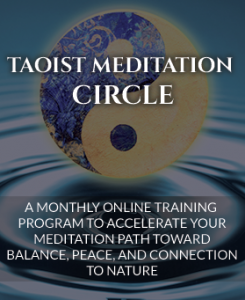
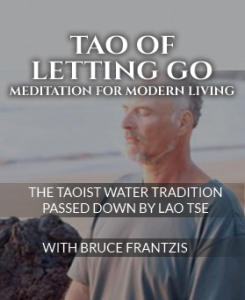
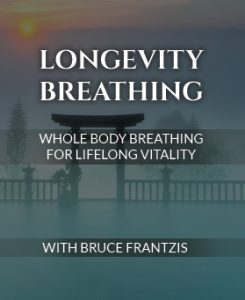
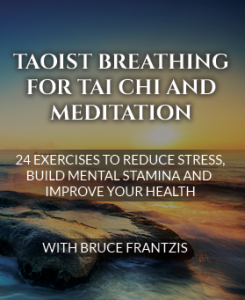
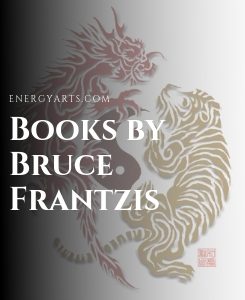
0 Comments